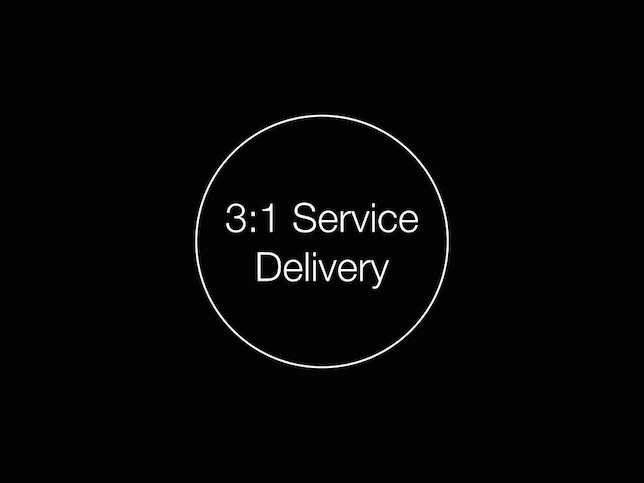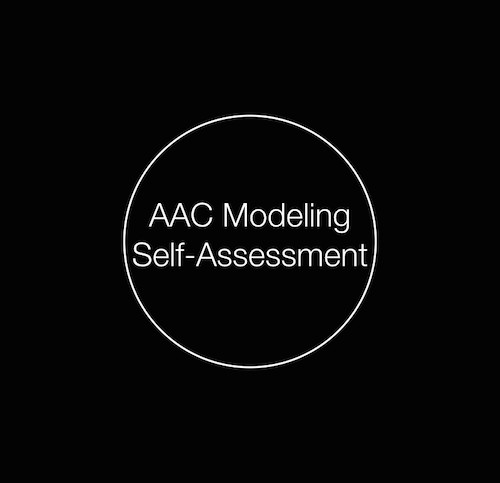The 3:1 service delivery model: a solution for parent education of AAC
Throughout my 10 years as a speech-language pathologist (SLP), I have provided services via private practices, schools, and home visits. One of my favorite things about working in private practices and conducting home visits is the amount of direct parent contact (particularly for teaching how to implement augmentative and alternative communication [AAC]), which is typically 1 to 4 times per month. The parents are available at the end of the sessions for parent education that is built into the service time. Direct contact with parents in the schools, on the other hand, is typically limited to 1 to 4 times per year for the annual individualized education program (IEP) meeting and any observation time(s) parents specifically request. The reason for reduced parent contact could be due to school-based SLPs having busy schedules that include a lot of meetings (special education and regular education), frequent assessments, and high caseloads to service with little to no help from any assistants; plus, IEP services for speech and language don’t often account for parent education time.
When I started working in a local school district this year, I heard concerns expressed by parents who were looking for more contact with the SLP, specifically for parent education in using AAC systems. Parents wanted to know how they could support their child’s AAC needs at home and in the community. This is a valid concern that we as SLPs need to address. When it comes to AAC, parent involvement is particularly important for skills to generalize across settings. Parents can help with maintenance (e.g., charging the technology and keeping it in good condition) of the AAC system, making it available, modeling, and encouraging opportunities to use the AAC system. The issue is how do we as school-based SLPs provide the supports parents are seeking (and truly deserve) in the midst of our busy schedules?
After attending a districtwide SLP meeting and talking to some district SLPs, I learned that our administration supports the 3:1 service delivery model for SLPs. The 3:1 model involves direct services for 3 weeks, followed by 1 week of consultation. The 1 week of consultation time is used to meet with staff and parents; however, the priority is given to parents because staff consultation is frequently provided throughout the 3 week period when direct services are also delivered. The best part about this model is all of the services, including the consultations, are accounted for in the students’ IEPs. So, this essential parent education time is part of the SLPs schedule.
Establishing the 3:1 model can be a bit of an undertaking as approval by parents within the IEP is needed. Fortunately for me, one of my colleagues was able to get almost all of my students’ parents to approve the 3:1 model via the IEP process last school year. She was also able to get AAC systems for many of my students with AAC needs. I found that my role this year was to select core vocabulary organizations based on my students’ needs, and to train staff and parents on AAC teaching strategies.
Here are some strategies I have discussed with parents (as well as staff) during consultation times:
• Making the AAC system available at all times
• The vocabulary organization in reference to motor planning
• Aided language stimulation – modeling by touching the symbols as you talk
• Modeling a particular number of core words per sentence just above the AAC user’s current skill level (e.g., model 2 core words per sentence if the AAC user typically uses 1 core word per sentence)
• Modeling just the core words on the home screen of the AAC system
• How to model core words for a given activity (e.g., going to the grocery store)
• Modeling core words for various communicative functions (e.g., requesting, protesting, commenting, asking questions, describing, exchanging information)
Thus far, parents have been very complimentary regarding the 3:1 model. They appreciate the increased contact time and the training they have received. So, in my experience, the 3:1 model is proving to be a viable solution for providing parent education to support students with AAC needs.
Links
– 3:1 service delivery model – http://www.asha.org/slp/schools/prof-consult/service/
– Functional AAC Intervention: A Team Approach – http://www.amazon.com/Functional-Aac-Intervention-Team-Approach/dp/1883315220




